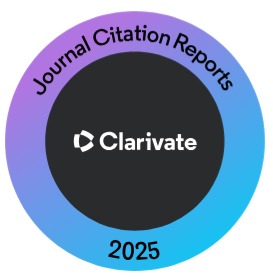Correlation between High Heel Vs Flat Footwear with Balance and Foot Pain in Physiotherapy Students
Keywords:
Balance, Foot pain, High heels, Flat footwear, PhysiotherapyAbstract
OBJECTIVE: To find out the correlation of habitual footwear with balance and foot pain among Physiotherapy students.
METHODOLOGY: This co-relational study was performed in Faculty of Physiotherapy from Jan 2017 to April 2017. It includes 100 students, both male & female from 130 volunteers using flat and heeled footwear Students having disability, obese with high BMI, Foot pain & balance problem were excluded. They were divided into two groups. Group A includes 50 males (A1-shoes with heels, A2 shoes without heels) and Group B includes 50 females (B1-flat slippers, B2-high heeled slippers). They were assessed using the Foot Function Index and star excursion balance test to analyse effects of footwear on balance and disability. The collected data was analysed and tabulated with both inferential and descriptive statistics using SPSS version 24. Paired t-test was used to find statistical difference within the groups & Independent t-test to find statistical difference between the groups.
RESULTS: Data suggest that foot pain is more in the Group B2 and the balance is better in Group A2. Both groups consist of students using foot wears with the heels. The p value (p<0.05) shows that there is a difference between the groups A1, A2 & B1, B2.
CONCLUSION: This study proves that there is a significant difference in SEBT [star excursion balance test] FFI [foot function index] Score among the group A and group B. It shows that the group A2 and B2 have significantly more balance and foot pain than the group A1 and B2.
Downloads
Published
How to Cite
Issue
Section
License
Submission of a manuscript to the journal implies that all authors have read and agreed to the content of the undertaking form or the Terms and Conditions.
When an article is accepted for publication, the author(s) retain the copyright and are required to grant the publisher the right of first publication and other non-exclusive publishing rights to JLUMHS.
Articles published in the Journal of Liaquat University of Medical & health sciences are open access articles under a Creative Commons Attribution-Noncommercial - Share Alike 4.0 License. This license permits use, distribution and reproduction in any medium; provided the original work is properly cited and initial publication in this journal. This is in accordance with the BOAI definition of open access. In addition to that users are allowed to remix, tweak and build upon the work non-commercially as long as appropriate credit is given and the new creations are licensed under the identical terms. Or, in certain cases it can be stated that all articles and content there in are published under creative commons license unless stated otherwise.























